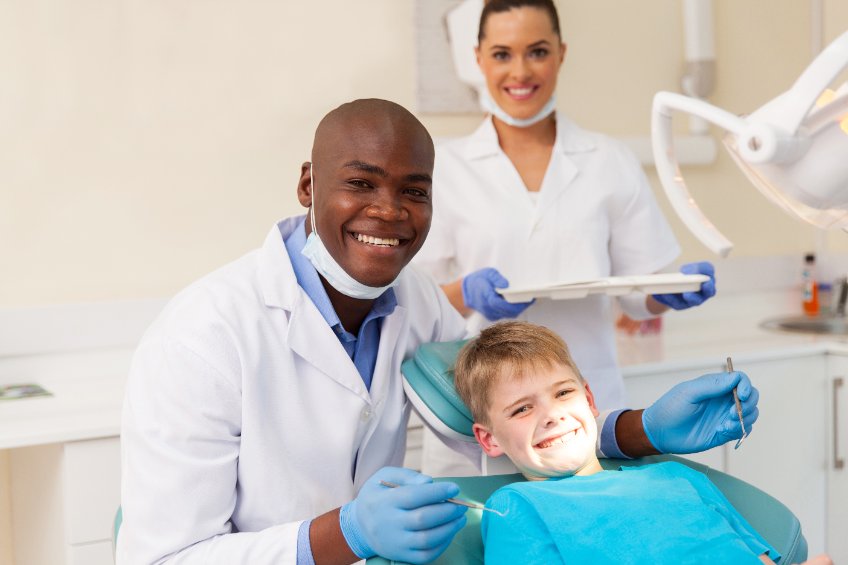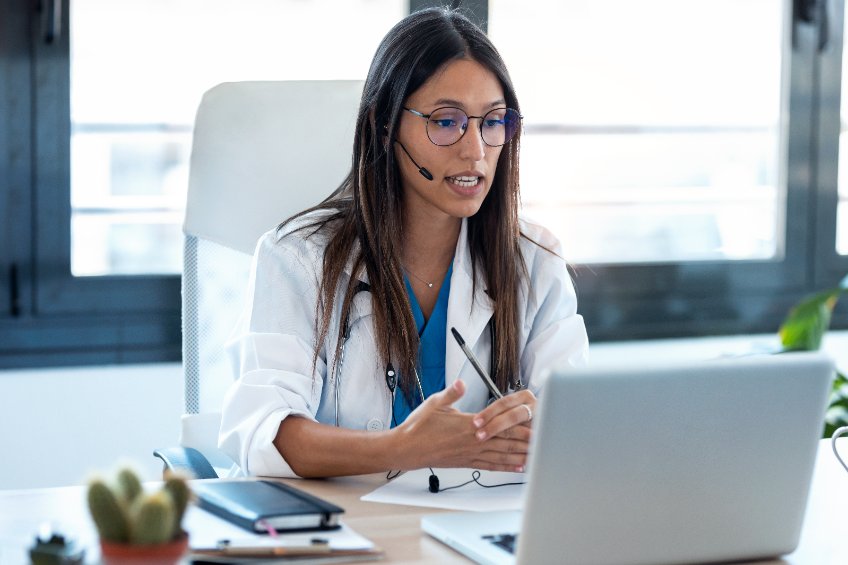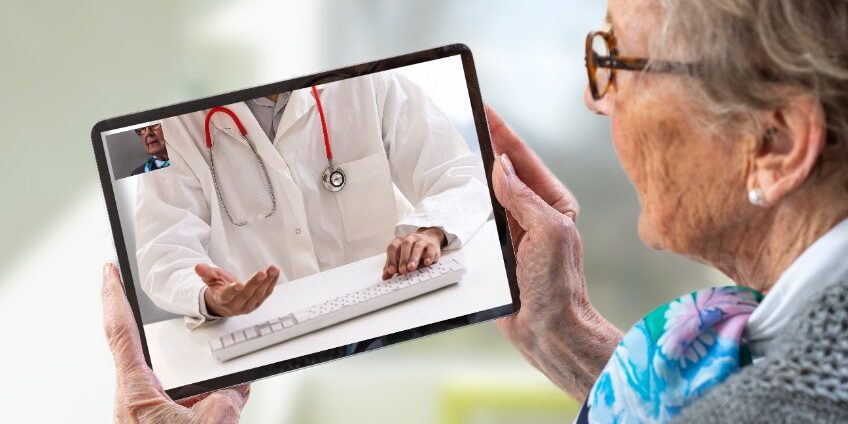Many patients have recently embraced remote healthcare solutions, including those who are seeking treatment for obstructive sleep apnea in a dental sleep medicine practice.[i] While those dental sleep medicine offices that have launched telehealth programs report that there are pros and cons to making the shift, many have seen how a simple change in workflow can yield impactful results with easier access to care for patients and fewer hours spent in the office for providers.
At one dental sleep practice in Michigan, the dentist uses telehealth technology, and compares it favorably to traditional in-person visits. But the decision point whether to implement virtual visits, he says, depends mostly on whether the dentist is comfortable with the technology. In this particular practice, telehealth has reduced clinic hours and improved productivity through less hours in the office seeing patients, yet more patients being “seen.” Another benefit is the ability to electronically schedule remote patients, interspersed between office visits. But how are patients better served? Obviously, there are less trips to the office, and where travel times are extended, these patients save on costly trips.
But this particular practice has also experienced some issues with individuals who are not accustomed to using technological services, not the least of which is healthcare. This was found to be a particular barrier in the elderly. But the use of both traditional telephone and Facetime consultation has overcome this obstacle in many cases. One other issue is the concern for some loss of communication where non-verbal contact is employed
Dental sleep medicine practitioner, Michelle Cantwell, DMD, who is based in Lancaster, PA stated that completing an initial consultation via telehealth improves access to care. And, in her experience, it is a simple change in workflow. “Overall, feedback has been positive. Patients have noted that they appreciate not needing to miss work or travel,” Cantwell adds.

But Cantwell emphasizes that not every patient will be comfortable, capable, or have the necessary access to the real-time video component. For this reason, dental sleep medicine professionals must be prepared to offer more traditional alternatives. In her case, patients still have the option to request in-person consultations.
In Pankaj Singh’s view, the most important aspect to consider when determining whether telehealth is right for a dental sleep practice is whether time can be dedicated to accommodate virtual care.
Pankaj Singh, DDS, MD, DABDSM, DABOI, DASBA, DICOI, FADSA, FAAID, a dentist specializing in sleep apnea, implants, temporomandibular joint disorders, sedation, and cosmetic and aesthetic dentistry in New York City, says dentists who are considering adding telehealth must figure out “if they can dedicate time in the schedule…to accommodate virtual care.” He says, “Another thing you should consider is what all services you will be offering virtually (ie, new patient consults, follow-up/post-op/post-appliance insertion/oral appliance titration visits, emergency pre-office visit evaluation) so one can appropriately schedule time needed.”
Other considerations, Singh says, are what roles will conduct telehealth visits (dentists, nurse practitioners, dental assistants, and/or dental hygienists) and the fee structure (self-pay, third-party payor with potential balance billing, and no charge are several options).
Kyle Miko, CRT/CSE, founder and chief marketing officer at VirtuOx[ii] and the DocViaWeb[iii] telehealth platform, says that telehealth will continue to expand and is likely to ultimately incorporate additional digital connected devices to provide better care in the home.
Already, he says, dentists who use DocViaWeb get a “bird’s eye view” of their patients’ journeys. “The dentists can see when the patient is scheduled for their consult and if it has been canceled or completed. They can also see what the outcome of the consult was, and if a home sleep test prescription was written and sent off,” Miko says.

“Any dentist who wants to collaborate with a medical doctor for sleep testing, diagnosis, and prescription is ideally suited to use telemedicine because sleep medicine is something that can be done completely remotely. It makes the journey seamless for the patients,” says Jagdeep Bijwadia, MD, who is board-certified internal medicine, pulmonary medicine, and sleep medicine, and is the medical director for the sleep telemedicine offering at VirtuOx. Bijwadia visualizes a future in which dental scanning and even accurate device fittings can occur remotely. Since telehealth can save time and resources, he expects to see increased use of the technology in the years to come.
Jayme R. Matchinski is a health care attorney and Officer in the Chicago office of the law firm Greensfelder, Hemker & Gale, P.C. Jayme focuses her practice in health and corporate law, including helping health care providers and suppliers handle the complex regulatory and operation issues unique to the industry. She has significant experience in the area of Dental Sleep Medicine There are many business models and provider arrangements for the provision of telemedicine. She concludes that, “given the regulatory climate and increasing use of telemedicine by dentists and patients, these business models and provider arrangements are continuing to change.”[iv]
Dentists should think about how telemedicine is provided pursuant to the model and provider arrangements to ensure regulatory compliance, proper documentation, and the ability to receive reimbursement for the provision of telemedicine. The following are a few examples of telemedicine models and provider arrangements utilized by dentists and patients:
- Online patient access/portals/technical support
- A sleep disorder center provides patients with online access to view results from the polysomnography (sleep study) and offers patients options regarding the treatment of sleep disorders, including Dental Sleep Medicine and oral appliances.
- eHealth, mHealth, and medical apps
- Self-tracking apps for diagnostics, care support, and monitoring that may include weight loss, smoking cessation, medication compliance, and oral appliance compliance.
Dentists should carefully consider and monitor the structure of business models and provider arrangements so that there is proper documentation of the provision of the telemedicine and receipt of the correct reimbursement. Dentists and dental practices should consider the following issues which are related to the provision of telemedicine:
- Business terms and transactional considerations, including compensation;
- Intellectual Property;
- FDA complianace;
- Data Access;
- Scope of Practice and Licensure;
- Patient Privacy and Information Security;
- Fraud and Abuse Concerns;
- Cybersecurity Insurance;
- Reimbursement; and
- Regulatory Compliance, including HIPAA and State Privacy Regulations.
Matchinski also warns that dentists must pay particular attention to state and local laws and regulations. “As telemedicine continues to grow, dentists and patients will need to navigate telemedicine requirements for licensing, scope of practice and reimbursement. Rapid changes in technology, Dental Sleep Medicine, and health care delivery systems will continue to allow dentists, patients, and other health care providers to increase their use of telemedicine.”
There are many opportunities for dentists to implement and use telemedicine, but dentists must continue to closely monitor the changing regulatory landscape to ensure compliance, receive reimbursement, and avoid potential pitfalls and exposure to liability.
Who We Are
SleepEdu.org meets the continuing educational needs for sleep and respiratory professionals working in the sleep medicine industry. RespiratoryEdu.org provides Approved Online Continuing Education for Respiratory Therapists & DME Providers’ Staff.
FOOTNOTES:








